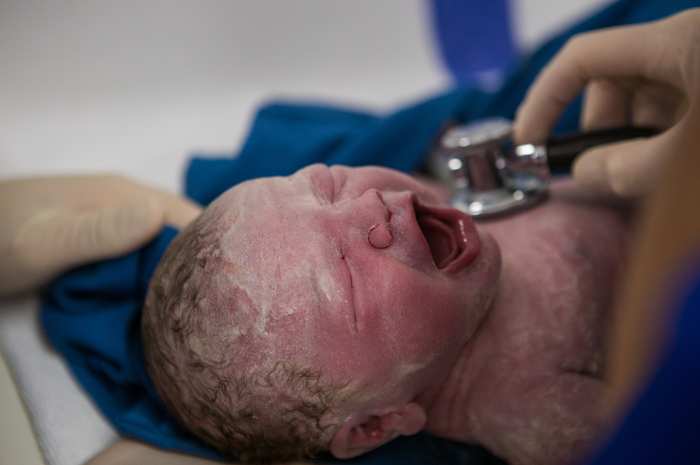
SCCM Releases PANDEM Guidelines for Critically Ill Children and Infants
The PANDEM guidelines for children and infants were published in the February 2022 issue of Pediatric Critical Care Medicine
Routine monitoring for delirium, pain, agitation, and withdrawal while instituting an interdisciplinary, multiprofessional model of care is vital to ensuring the best care and outcomes.
The ICU Liberation Campaign is expanding to offer more resources for treating children and infants.
One of the pillars of these resources is the 2022 SCCM Clinical Practice Guidelines on Prevention and Management of Pain, Agitation, Neuromuscular Blockade, and Delirium in Critically Ill Pediatric Patients With Consideration of the ICU Environment and Early Mobility (PANDEM).
CHILD HEALTH: LEARN MORE ABOUT MEDICHILD BY VISITING THE BOOTH AT EMERGENCY EXPO
The PANDEM guidelines for children and infants were published in the February 2022 issue of Pediatric Critical Care Medicine
Many of the concepts in the PANDEM guidelines reflect the goals of SCCM’s ICU Liberation Campaign, including adequately treating pain, thoughtfully determining sedation medications, assessing for and treating delirium, promoting early mobility, and engaging families in the care of their loved one.
“Comprehensive care requires the use of a variety of tools to repeatedly and intentionally reassess critically ill children, including answering three simple questions by the medical team on rounds at least every day—Where is the patient now, where do we want them to go, and how do we get them there?” said Heidi A.B. Smith, MD, MSCI, cochair of the guidelines committee.
“It should be an active everyday process to determine how we liberate patients from the ICU—Can we get them off the ventilator today? If not, what do we need to do to get them off of it tomorrow?”
Critical care clinicians—particularly nurses—play a vital role in conducting the necessary assessments for pain, agitation, delirium, and withdrawal; following management guidelines by the team; and then reassessing treatment success.
Less sedation may lead to better clinical outcomes, including decreased delirium prevalence and iatrogenic withdrawal syndrome.
“Delirium often is under-recognized in children but it’s a very real thing,” said John W. Berkenbosch, MD, FAAP, FCCM, cochair of the guidelines committee.
“Even those who recognize delirium often treat it the wrong way by starting an antipsychotic or adding further sedation or a benzodiazepine.
The guidelines recommend trying nonpharmacologic interventions and enhancing sleep by bundling care so you don’t wake the patient every hour.
There’s very good evidence regarding the preferred combination of sedatives and analgesics in combination with nonpharmacologic methods and comfort measures to help prevent delirium as well as making kids’ days and nights in the ICU as normal as possible.”
The recommendations in the PANDEM guidelines
The PANDEM guidelines for infants and children recommend employing nonpharmacologic methods such as music, physical, occupational, and child life therapy to help instill real-life normalcy into the child’s ICU stay.
For example, clinicians can suggest that families bring in the child’s favorite music, headphones, videogames, or toys.
“The safety protocols for COVID-19 have underscored how important it is to bring a sense of normalcy to children, whose caregivers are wearing gowns, gloves, and other personal protective equipment (PPE), which create a barrier between the infant or child and necessary touch, talk, and face-to-face connection,” said Dr. Smith.
“Building normalcy into their stay is all the more important for children whose families live several hours away and can’t visit regularly.”
She notes that COVID-19 has brought some positive changes, including the use of videoconferencing to update families, ensuring that children can hear their parents, and enhancing the use of language interpreters via a touchscreen tablet for children whose families do not speak English.
Parents need to be empowered to be involved in their child’s care as much as possible, from simple tasks such as changing a diaper to being educated on how to provide nutrition using a feeding tube.
As clinicians, we can even push boundaries using safety protocols to allow parents to hold their child when intubated, even if it is challenging for the medical team.
“It’s the right thing for the kids. The more normal we make it for kids and their family members, the better their healing process,” said Dr. Berkenbosch.
“Family members are as much a part of treating children as the physician, nurse, therapist, or pharmacist.
They know their child best and can tell us, for example, ‘That’s my child’s hungry cry or mad cry.’ Facilitating parental involvement as much as possible helps us intervene quickly and effectively.”
The guidelines contain 44 recommendations based on the best available evidence, featuring management strategies such as enhanced use of protocolized sedation and analgesia in addition to nonpharmacologic interventions and family involvement strategies.
Read the PANDEM guidelines in full:
2022_Society_of_Critical_Care_Medicine_Clinical.15 PANDEMRead Also:
Emergency Live Even More…Live: Download The New Free App Of Your Newspaper For IOS And Android
Paediatrics / Recurrent Fever: Let’s Talk About Autoinflammatory Diseases
Paediatrics, Diabetic Ketoacidosis: A Recent PECARN Study Sheds New Light On The Condition



